Our Location
Aluminum is a versatile metal that can be cast using all casting processes. It’s one of the oldest metallurgical techniques, and copper was the first metal accidentally refined from chalcopyrite and chalcocite rocks in a fire. Complex parts can be manufactured through aluminum casting using a single-stage process from liquid metal to finished parts.
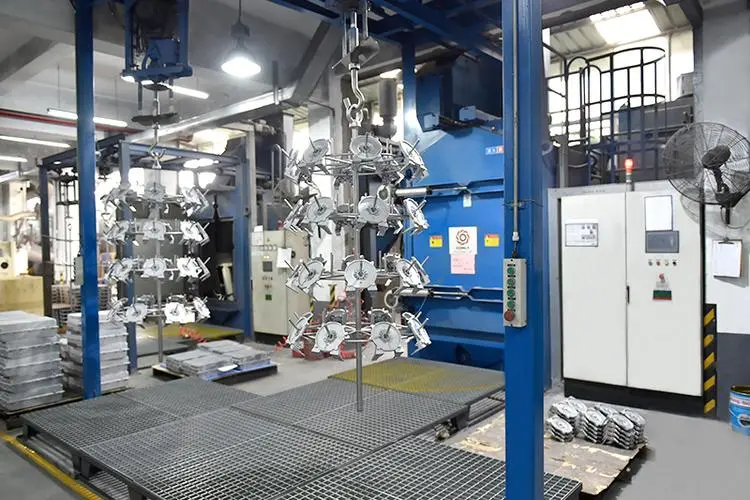
Table of Contents
ToggleAluminum casting is a process used to create a part by introducing molten aluminum into a cavity. Aluminum and its alloys have low melting points and viscosity, which allow them to cool and form strong, rigid solids. Different casting processes use these properties by creating a heat-proof cavity using one or two parts and then pouring molten aluminum into it. As the metal cools, it solidifies, taking on the shape of the cavity. The materials and construction of the cavities used for this process vary, and different processes have different names.
Aluminum casting is crucial in the aluminum supply chain. Human technology has evolved over the centuries, from bronze to iron to steel and now to aluminum. It is abundant and easy to refine, making it essential to many technological areas. Aluminum metal casting produces precise, lightweight, moderately strong finished parts, empowering various manufacturing sectors.
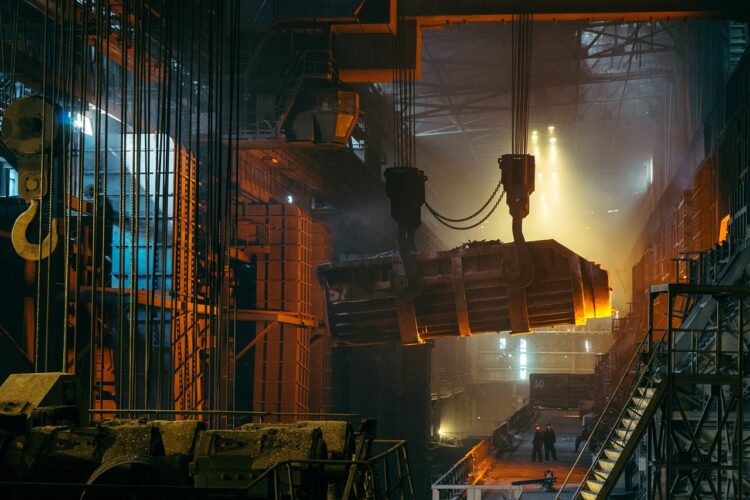
The term “aluminum” in casting commonly refers to its alloys instead of pure aluminum, which possess unique properties.
Aluminium metal casting processes can be categorized into different types. The following are some of them:
Die casting is a widely used aluminum casting die process for manufacturing aluminum parts. There are two processes for die casting: low-pressure and high-pressure. The latter is more suitable for the material being used.
In the die casting process, aluminum is preheated and injected under high pressure into a die mold designed for the intended product. After the aluminum cools, the cast aluminum component is removed from the die, and the cycle repeats once the die has cooled down.
Sand casting is the most common manufacturing process due to the sand’s ability to withstand high temperatures. The process involves creating a mold using sand and heating the aluminum material. Once the aluminum is molten, it is poured into the sand mold. The cast aluminum part is then removed after it has cooled down.
However, sand-cast aluminum typically has low dimensional accuracy and a rough surface finish. Therefore, post-processing options such as trimming are often required to achieve the desired precision and surface finish.
Investment casting is a process that involves creating a positive model of the desired part. This model is made of a material that can be easily removed, such as wax or expanded polystyrene. The model is then used to create a plaster mold, which is heated to remove the wax or polystyrene. It leaves behind a cavity in the mold that is the same shape of the desired part. Molten metal is poured into the cavity, cooling and solidifying quickly. This process is typically used to create intricate and high-value parts. Once the part is complete, the plaster mold is destroyed to remove the finished part.
Permanent mold casting is a process similar to die casting. However, the main difference between these processes lies in the mechanism used to inject the aluminum into the mold. While die casting relies on high or low pressure to fill the mold, permanent mold casting uses gravity. This results in a less turbulent injection process, which makes it a popular choice for certain applications.
Lost foam casting is a casting process where a pattern made of foamed polymer is used instead of wax, similar to investment casting.
A more advanced technique of sand casting involves using resin-bonded sand to create a durable shell around a pattern. Two shells are combined to create a sacrificial cavity filled with molten aluminum. This process is quicker and less expensive than traditional sand casting and is ideal for medium—to large-scale casts that require higher accuracy.
Vacuum die casting is different from pressure or gravity die casting. In vacuum die casting, a reservoir is placed beneath the casting tool. The molten material is then pulled up by a vacuum applied to the tool. Vacuum die-casting results in lower porosity and higher-quality parts than other die-casting methods. As a result, it is becoming increasingly popular and is slowly replacing older die-casting methods.
This method utilizes gypsum plaster to shape the cavity tool, similar to shell mold and ceramic mold casting.
In this process, a silicate slurry is cast around a pattern. The volatile materials from the slurry are either burned (Osborn-Shaw process) or baked off (Unicast process), leaving a ceramic cavity that can be filled with molten metal. This process is similar to shell mold casting in many ways.
Open mold casting is an older alum casting method that uses open cavities made from brick, stone, steel, or sand. This technique typically creates simple billets that can be machined or forged later. It is often considered a variation of permanent mold casting.
Open mold casting is a simple and old-fashioned method of casting aluminum using open cavities made from brick, stone, steel, or sand. This method is typically used to produce simple billets that can be used for later forging or machining. It can be considered a type of permanent mold casting.
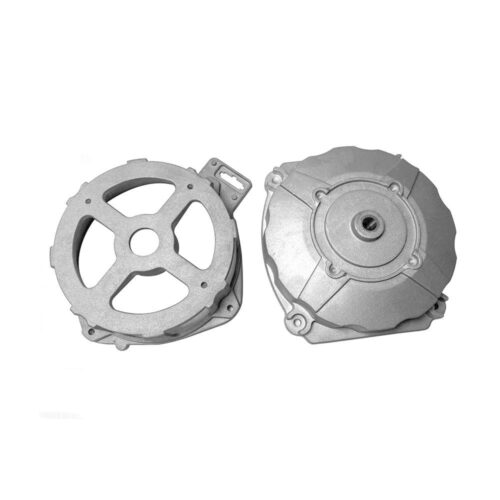
Deep drawn aluminum
Cast aluminum and aluminum are essentially the same material. Cast aluminum is made by subjecting aluminum to a casting process. However, due to the various casting methods, the casting process can introduce inclusions and porosity absent in the original aluminum material.
Forged and cast aluminum differ in their crystalline structure. Casting results in highly variable crystal structure, making cast parts lower in strength, while forging creates harder, stronger material with a grain that enhances strength. Inclusions are aggregated in cast parts, creating weaknesses. In contrast, inclusions in forged parts are smashed and distributed. While castings create detail, forging is best for simple shapes.
When choosing a casting process for your project, it’s important to consider various factors:
If you need to produce aluminum parts quickly and in large quantities, die casting is the best option, followed by sand casting and permanent mold casting.
The design complexity of the end product plays a crucial role in selecting the casting process. Sand casting is preferred for large and complicated aluminum casting parts, while permanent mold casting is better for dimensionally accurate cast aluminum parts.
Sand casting and permanent mold casting are more suitable for high-volume production and tooling balance than other casting processes.
Sand casting is the most proper process for prototyping as it requires a low investment cost. On the other hand, die casting and permanent mold casting require a high investment cost for aluminum investment casting companies, which makes them unsuitable for prototype aluminium casting die, as only a few pieces are required.
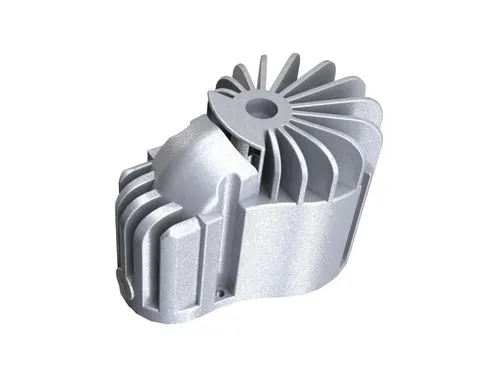
Prototype aluminum casting
Permanent mold casting strikes the best balance between strength and surface finishing, while sand casting and die casting are comparable in strength, with die casting having a better surface finish.
Finishing processes serve both aesthetic and functional purposes. Here are some finishing processes that you can consider:
Painting is a popular finishing process that can also serve a functional purpose. The process involves cleaning and sanding the material before applying a self-etching primer, a layer of paint, and an optional protective enamel sealer. It can enhance the material’s corrosion resistance and add color.
In this dry finishing process, dry powder is applied to aluminum to make it more durable and corrosion-resistant.
Anodizing is a process that creates a durable and corrosion-resistant finish on anodizing cast aluminum. The process involves immersing the aluminum in an electrolyte tank and passing an electric current through it.
Electroplating coats a material with a thin layer of another material using electrolysis. For copper plating cast aluminum, a copper-based electrolyte and anode are used. The copper used in plating is sourced from the copper solution, which the anode replaces. This process improves the appearance and protection of aluminum castings.
Benefits of Aluminum Die Casting:
1. Lightweight.
2. Excellent strength-to-weight ratio.
3. Durability under variable and cyclic loads.
4. High accuracy.
5. Easy for machining cast aluminum.
6. Suitable for high-volume and automated manufacturing.
7. Resistant to corrosion
8. Superior thermal and electrical conductivity.
Limitations of Aluminum Die Casting:
1. Poor abrasion resistance.
2. Limited fatigue resistance
3. Not suitable for bearing surfaces.
4. Moderate temperature vulnerability.
Cast aluminum is a versatile material widely used in various industries. It has excellent physical and chemical properties, making it ideal for many applications. Here are some common uses:
Medical Industry: Aluminum casts are used to make prosthetics and surgical trays due to their strength, weight, and ability to create complex shapes.
Automotive Industry: Aluminum casts are popular for making lightweight yet durable parts like brakes and steering wheels, improving fuel efficiency.
Culinary Industry: Cast aluminum cookware is durable, lightweight, corrosion-resistant, and has excellent heat conductivity.
Aircraft & Aerospace Industry: Aluminum parts are lightweight and strong, perfect for reducing fuel consumption and increasing carrying capacity.
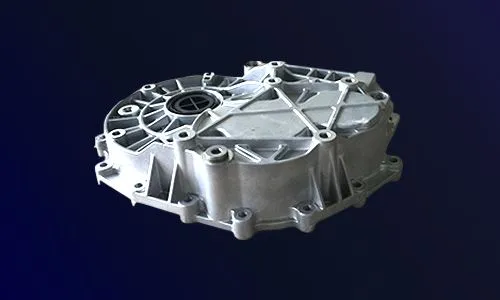
alsi10mg aluminum
3d print metal casting is not possible, but 3D-printed patterns are popular for aluminum casting. They are more precise and faster than traditional methods. 3D printing is also ideal for design validation testing before production.
Aluminum castings can be highly durable if designed to exploit the process’s strengths while compensating for its weaknesses. Cast aluminum is unsuitable for bearing surfaces or withstanding heavy impact loads, so it must be designed carefully to handle high and cyclic loads. Stress cracking, creep, abrasion, and shock loading are all issues that must be considered during the product design process to manage them effectively.
Cast aluminum is generally heat resistant within the limits of the material. The heat resistance of cast aluminum varies considerably by alloy. For example, AlSi alloys are easily cast, resistant to heat cracking, and can serve up to 180°C. AlCu alloys can handle up to 350°C for higher temperature resilience but require simpler shapes and thicker sections to cast well. AlMg alloys offer better temperature performance and castability than AlCu but have lower strength.
The most common aluminum precision casting method is permanent mold casting. Gravity provides better dimensional tolerance and produces fewer defects than die casting and sand casting.
Yes, welding cast aluminum is possible, but it is often more challenging than welding other types of aluminum. Cast aluminum tends to be less dense and more porous, making it difficult to achieve a strong weld. Additionally, the porous nature of cast aluminum can make it more vulnerable to contamination during welding.
Aluminum cast parts are strong, durable, and lightweight and used in the aviation and automotive industries. This article overviews aluminum casting, its applications, and benefits. We offer various services as one of China’s best custom aluminum casting companies. Contact us to learn more.

